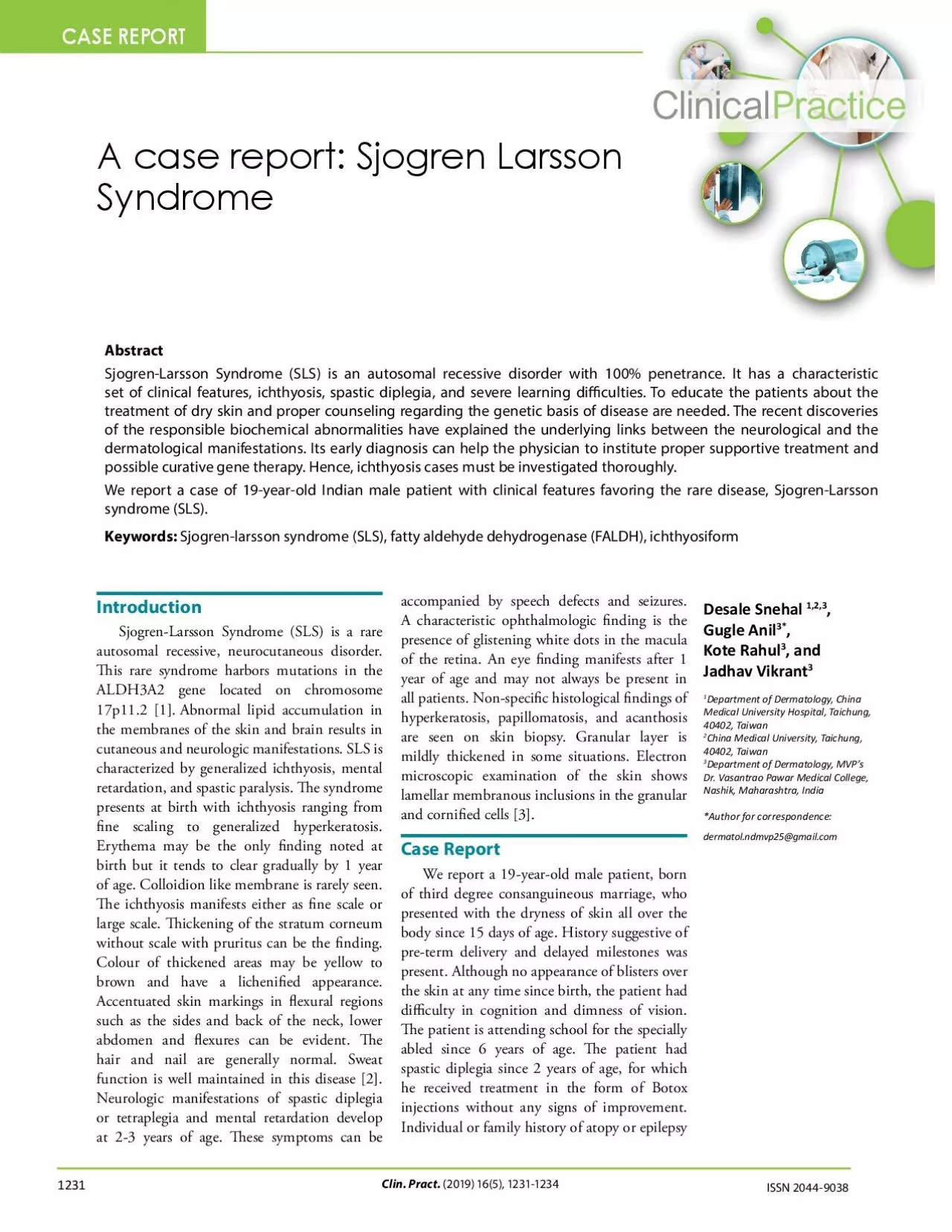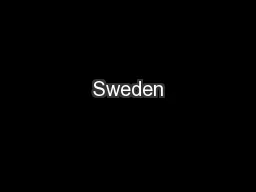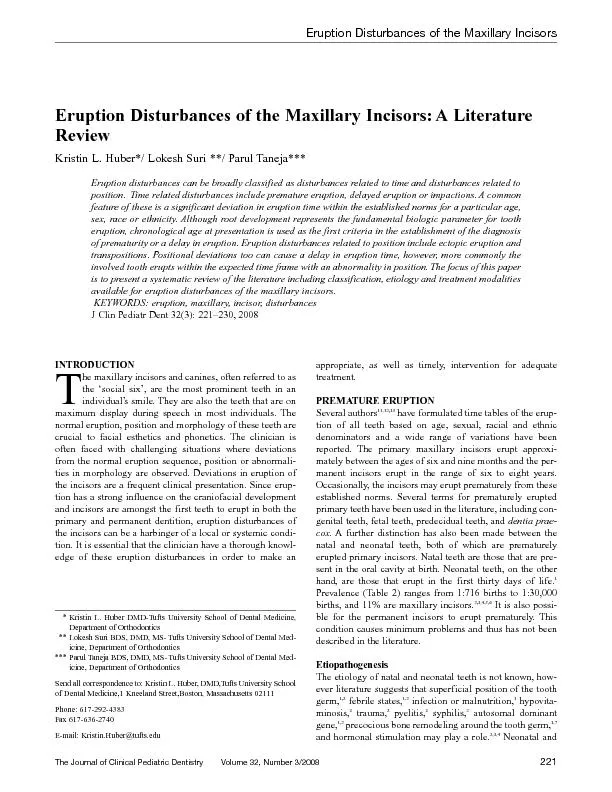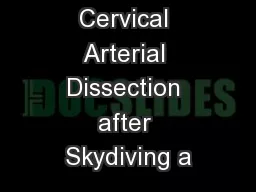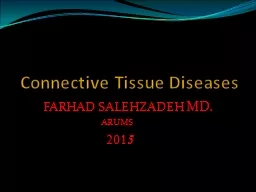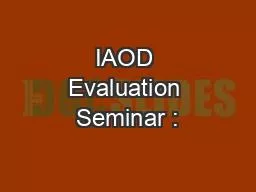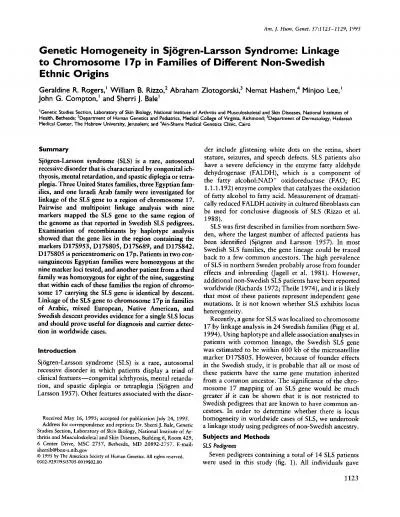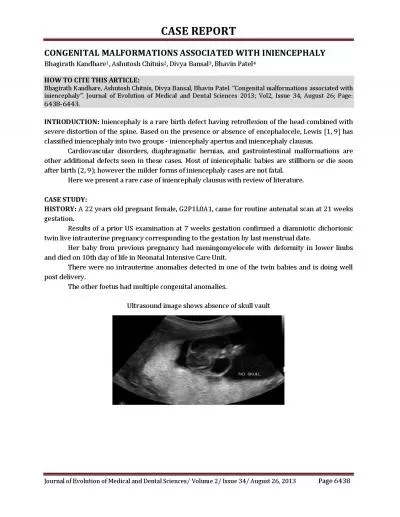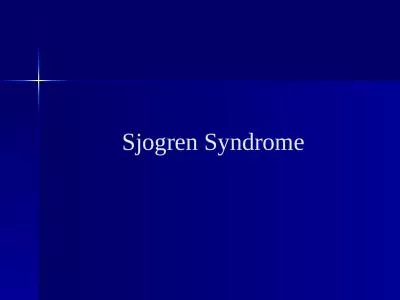PDF-A case report Sjogren Larsson
Author : berey | Published Date : 2022-09-21
1231 IntroductionSjogrenLarsson Syndrome SLS is a rare autosomal recessive neurocutaneous disorder 31is rare syndrome harbors mutations in the ALDH3A2 gene located
Presentation Embed Code
Download Presentation
Download Presentation The PPT/PDF document "A case report Sjogren Larsson" is the property of its rightful owner. Permission is granted to download and print the materials on this website for personal, non-commercial use only, and to display it on your personal computer provided you do not modify the materials and that you retain all copyright notices contained in the materials. By downloading content from our website, you accept the terms of this agreement.
A case report Sjogren Larsson: Transcript
Download Rules Of Document
"A case report Sjogren Larsson"The content belongs to its owner. You may download and print it for personal use, without modification, and keep all copyright notices. By downloading, you agree to these terms.
Related Documents

